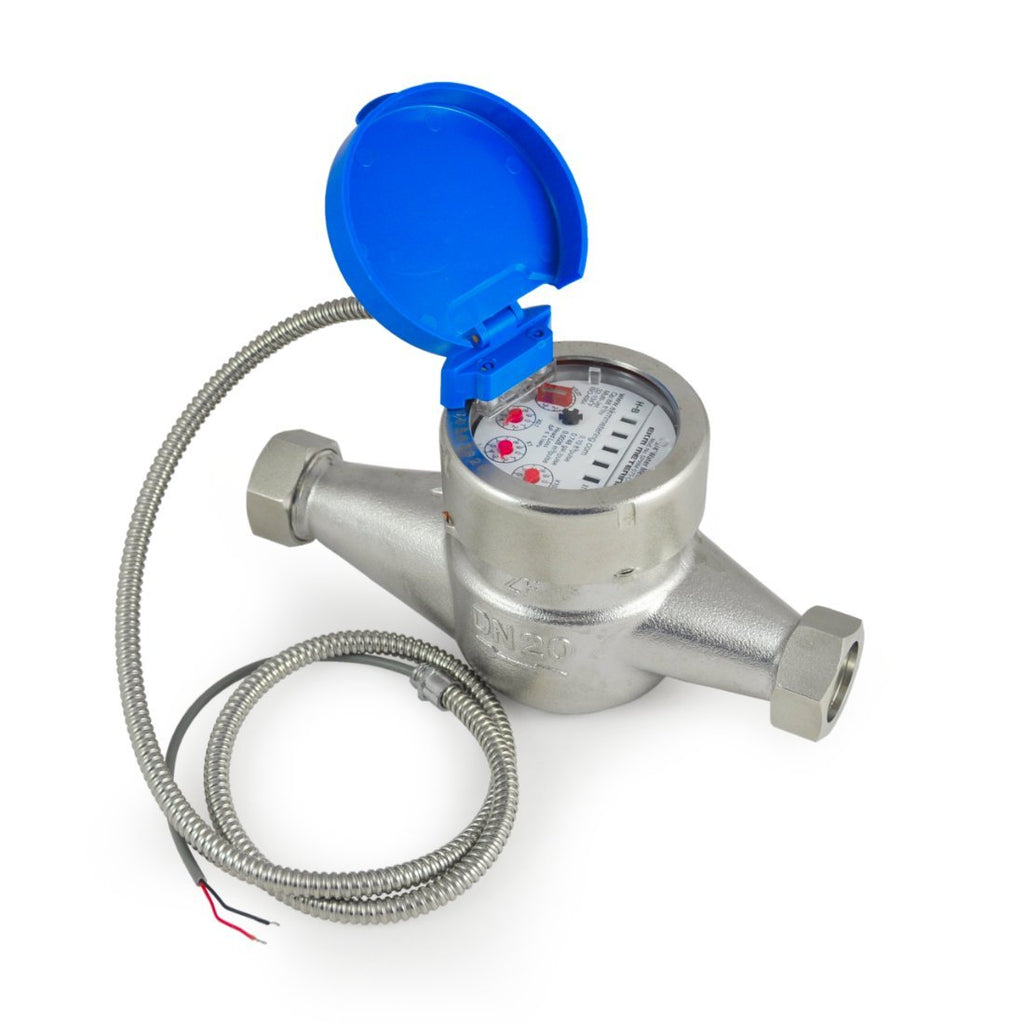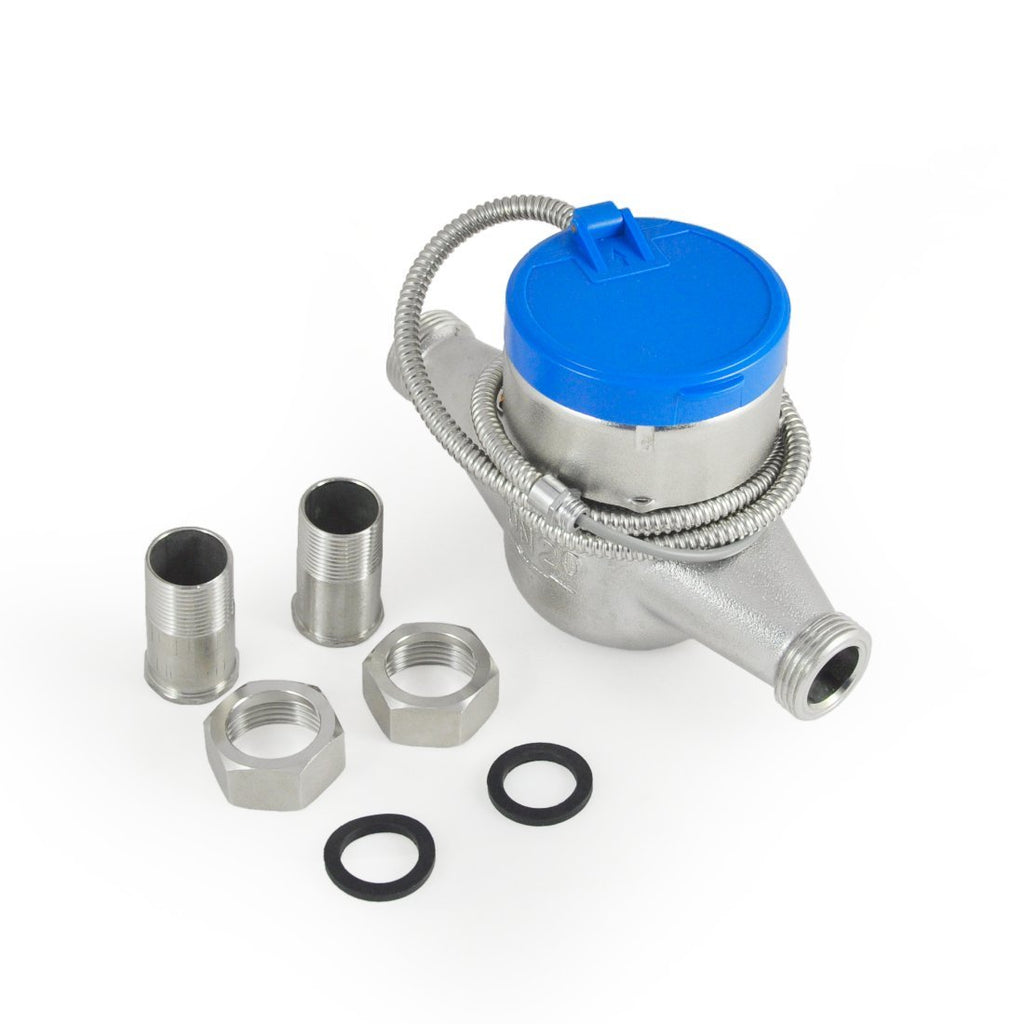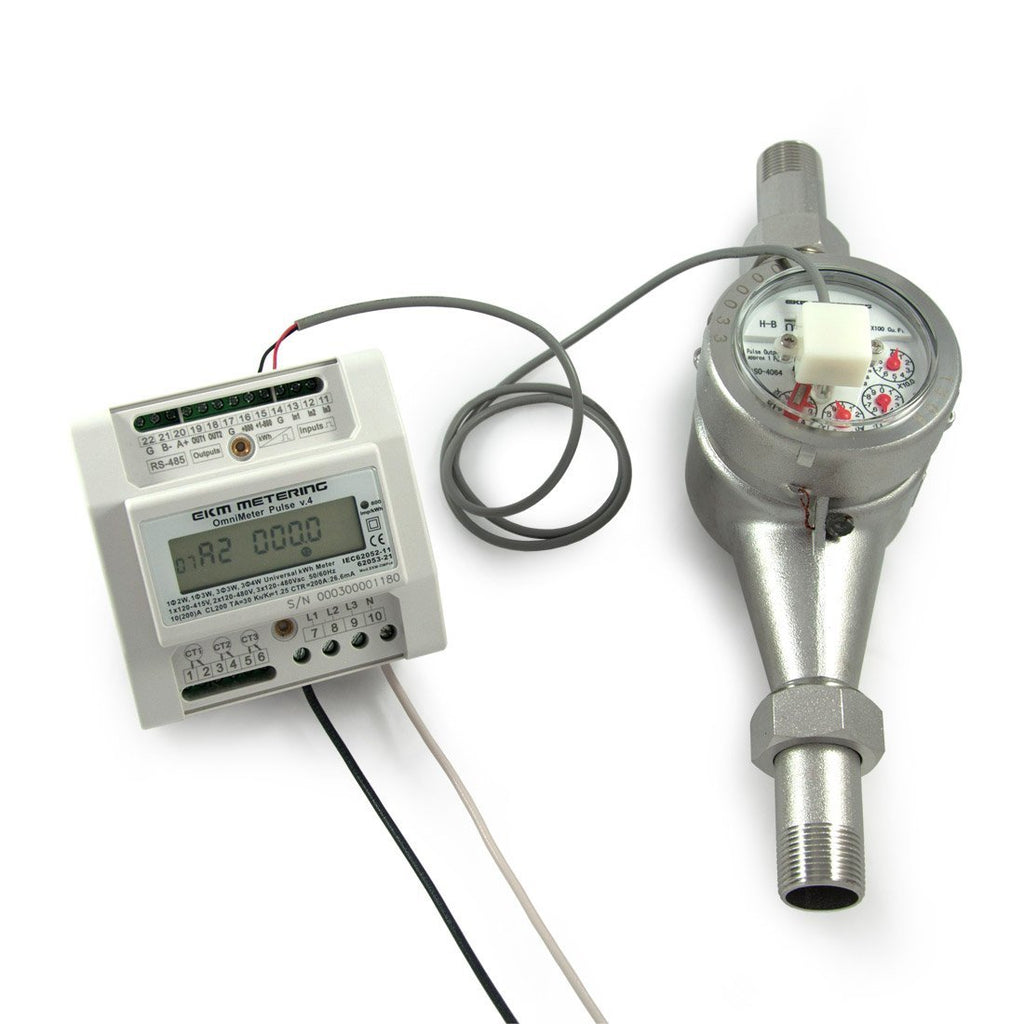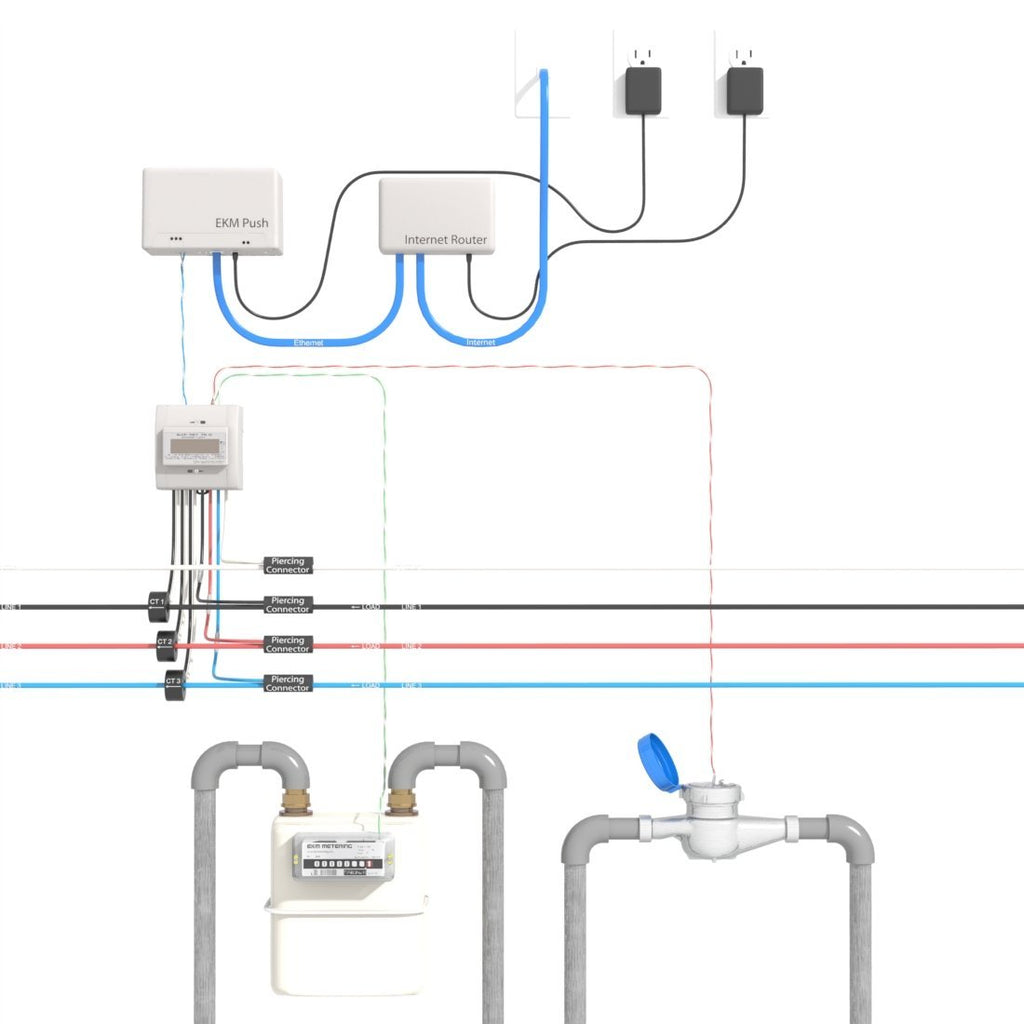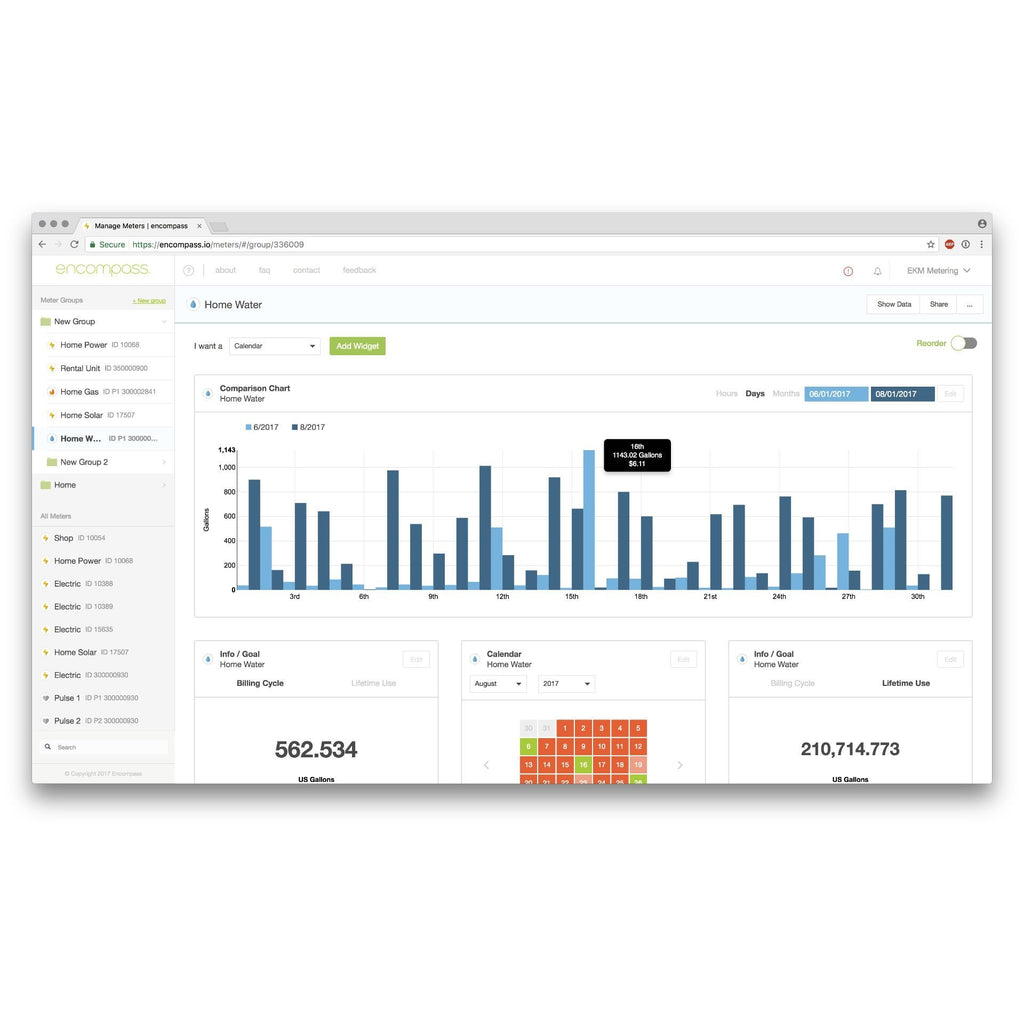3/4 Inch Water Meter - Stainless Steel, Pulse Output
3/4" Stainless Steel Pulse Output Water Meter - SPWM-075-CF. This is a great stainless steel water meter that can be read locally, or can be set up to be read remotely when paired with an Omnimeter Pulse v.4 and an EKM Push3 gateway.
The complete system provides your water meter data in the cloud for free! No recurring fees of any kind.
View More
More information
Type: 3/4" Stainless Steel Pulse Output Water Meter
Mounting: Horizontal Inline Mount -- 3/4" Male NPT Pipe Threads
Units: Cubic Feet
Pulse Output: 1 Pulse Per 1/10 cubic foot (approx. 0.75 gallon)
Model: SPWM-075-CF
Our remote readable 3/4" Stainless Steel Pulse Output Water Meters are a great solution for remotely, or locally, monitoring water consumption.
This is a well made, industrial grade, stainless steel (201 grade) water meter. You can use it as a traditional water meter where you read the water consumption off of the face of the meter. It also has the added functionality of being able to connect the pulse output wires to a pulse counting device. This meter produces a pulse for every 1/10 cubic foot (approx. 0.75 gallon, or 2.83 liters) that flows though the meter, these pulses can be then picked up and counted by our pulse counting devices. The pulse output wires can be extended up to 10,000 ft.
This meter has received California Type Approval from the California Department of Weights and Measures, which certifies that the meter's accuracy is revenue grade. This allows the meter's readings to be used for billing purposes.
This meter is not NSF 61 certified. For an NSF 61 certified model, please take a look at our SPWM-075-HD-NSF.
Remote Water Reading:
This meter is designed to generate pulses at a high rate to provide high granularity data when set up to read with a computer. This high granularity can provide better insights into usage patterns. In particular, it can tell you if you have a leak in your water system, because it only takes ~6.0 pints of water leakage to generate a pulse. In other words, if you see a pattern of pulses when you shouldn't (when you aren't intentionally using water) then you probably have a leak somewhere. The number of pulses over a given period of time will tell you how severe the leak is. Identifying and fixing water leaks can save a ton of money in water costs and overage fees, not to mention mitigating the damage that any leak can cause.
This pulse output water meter can be connected to our EKM-Omnimeter Pulse v.4, which is our new pulse input meter. This is our most advanced electric meter to date. This meter can count the pulse outputs from up to 3 pulse output devices. It can also control up to 2 external relays, which allows you to turn things on and off remotely.
Similarly, our new EKM-ioStack (beta) has the ability to count the pulse outputs from up to 4 pulse output devices. It has the added benefit of being powered by 12V DC instead of 120V AC like the Omnimeters, which makes it easier and safer to install.
This water meter, when connected to a v.4 Omnimeter or ioStack, can send pulse data to the cloud with our EKM Push3 data system. The Push3 sends all of your meter data to our cloud database and inserts it into your personal account, where you can access it for free. In other words, with this system you can easily monitor water use, at an unlimited number of sites around the world, for free.
Encompass.io
Encompass.io is our free online meter management platform for monitoring data, managing meters, generating bills, and more. It is designed specifically for people who are remotely reading their meters via the Push3 system. This platform can be used to visualize data on customizable dashboards, visualize cost, monitor trends, group meters, and a lot more. Each meter and meter group in Encompass can also be set up to email you, and/or your tenant, PDF bills. Here is a sample PDF water bill:
EKM Widget
The EKM Widget offers another option for quickly seeing your water meter data online. It is also easy to save and share your Widget setting once you have it setup how you want. Here is an example:
Use these water submeters to meter the water consumption in your apartments, your irrigation water (which can save you in sewer costs in some areas), meter your well output, or use them to detect leaks while you are away.
Product Features
- Stainless steel body and fittings
- Simple 2-wire connection between water meter and kWh meter
- No additional power source required
- Pulse count can be read remotely using the free, remote reading, Encompass.io, EKM Dash desktop software, or EKM Widget.
- Quality materials and construction, 3/4" NPT Male Threads
- Very reasonably priced water meter, even without the pulse output
Max Operating Pressure: 140 psi
For more information about our products and services, we encourage you to visit our online Knowledge Base, which provides spec sheets, videos, tutorials, FAQs, diagrams, and more.
Spec Sheet: 3/4 inch Stainless Steel Pulse Output Water Meter Spec Sheet .pdf
Compare water meter models: Water Meter Comparison Chart

